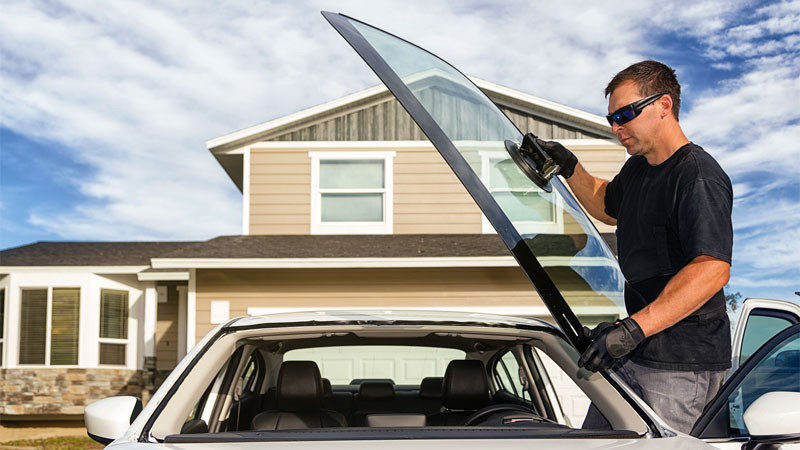My friends and I were driving around the city one day when we suddenly heard something crack. We thought another car had hit us, but there were no vehicles near us. Then one of my friends saw a crack in the windshield. It turns out that even if the car was only several years old, its windshield has already been replaced a few times.
For a while there, we didn’t know what to do. It was only a small crack, but we knew that taking it for granted could lead to bigger problems. There were no car repair, windshield, or glass shops.
Eventually, we decided to drive to the nearest gas station. That was when we found out that my friend’s car’s original windshield was replaced with a substandard one. That was also when we learned about OEM glass and aftermarket glass.
What are OEM and Aftermarket Windshields?
OEM or Original Equipment Manufacturer windshield is auto glass that is installed into a new car. It is the ideal replacement glass because it is similar to a car’s original windshield. If my friend’s cracked windshield is replaced with an OEM glass variety, the new glass can match the color, durability, tint, thickness, and fit of the glass being replaced.
In other words, OEM windshields come from the same manufacturers that made my friend’s car’s original windshield. They are as good as genuine.
OEM windshield replacement is the ideal choice of car owners who value safety and reliability. Original Equipment Manufacturer windshields are Department of Transportation-certified.
See Also – 6 Types of Window Tint for Cars

On the other hand, aftermarket windshields come from different car glass manufacturers. Most providers are companies that did not qualify for a subcontract with your manufacturer.
So, unlike OEM auto glass, aftermarket varieties are products of reverse-engineering – the manufacturers must do some research before coming up with the right measurements for the glass to fit the car. They are not able to consult with the manufacturers of the original windshield.
Remember that aftermarket auto glass is not and can never be 100% similar to OEM or original windshields. This is primarily the result of copyright laws, which do not allow aftermarket manufacturers to copy the design (and specifications) of the Original Equipment Manufacturer windshields.
So, the tint color, durability, and thickness can be different; only the shape and size are identical to OEM windshields.
See Also – How to Remove Car Window Tint
OEM and Aftermarket Auto Glass Differences
Now that we have an idea of the windshield options available to us, we now move on to learning and understanding their differences.
OEM Quality
OEM windshields are guaranteed to meet the standards of the windshield originally installed in the car. The carmaker’s supplier or manufacturer produces these windshields.
They follow the safety standards of original car manufacturers. Quality is not compromised because it is identical to that of a genuine auto windshield or glass.
OEM windshields have the right curvature and fit with the original glass being replaced.
Read Also – What is the Best Temporary Cover For Broken Windows?
Aftermarket Quality
Aftermarket windshields rely on research to come up with a design that fits the needs of the car. They cannot fully copy the design and specifications of the original windshields as copyright laws prohibit it.
In some cases, the aftermarket windshield may be too thick or of a different color. If it is thicker than the original, the glass will not fit the car’s front mirror.
Quality will also be difficult to copy. However, some providers offer more durable, high-quality auto glass options that are better than original windshields.
OEM Safety and Reliability
Original Equipment Manufacture car windshields are certified by the Department of Transportation, so they are safe and reliable for any car and car owner. They can withstand pressure, stress, and the impact of an accident because they are as reliable as genuine windshields.
Aftermarket Safety and Reliability
Aftermarket windshields may not fit cars 100%, and some consumers have complained about irritating noise and leaks (like my friend’s car). One can never be sure about the safety and reliability of aftermarket auto glass.
OEM Pricing
Original Equipment Manufacturer windshields are ideal for those who can afford its expensive pricing. Additionally, several insurance companies do not provide coverage for OEM auto glass replacement.
Aftermarket Pricing
Aftermarket windshields are more affordable than OEM auto glass. They are also easy to access and find. Aftermarket auto glass is available anywhere, including local stores in your area.
Safety is a Priority
We now know how important it is to keep car windshields properly maintained with the information provided above. We have also decided to choose the safest and ideal windshield for my friend’s car: original equipment manufacturer auto glass.
It is always better to be safe than sorry, so choosing the most reliable option should always be your priority. After all, your car’s safety is your safety as well.
Related Reading
See Also – 6 Car Fluids That You Need to Check Regularly
Ford F-150 photo copyright Auto Trends Magazine
- How to Cover a Broken Car Window (Quick, Temporary Fix) - Sep 13, 2023
- How to Remove Car Window Tint (the RIGHT Way) - Mar 28, 2023
- What is a Safety Glass and How Does It Work? - Feb 18, 2022



Which insurance company pays to have a broken wind shield replace on 2019 Jeep Wrangler jl 4 Door with the tint & Jeep emblem on the wind shield